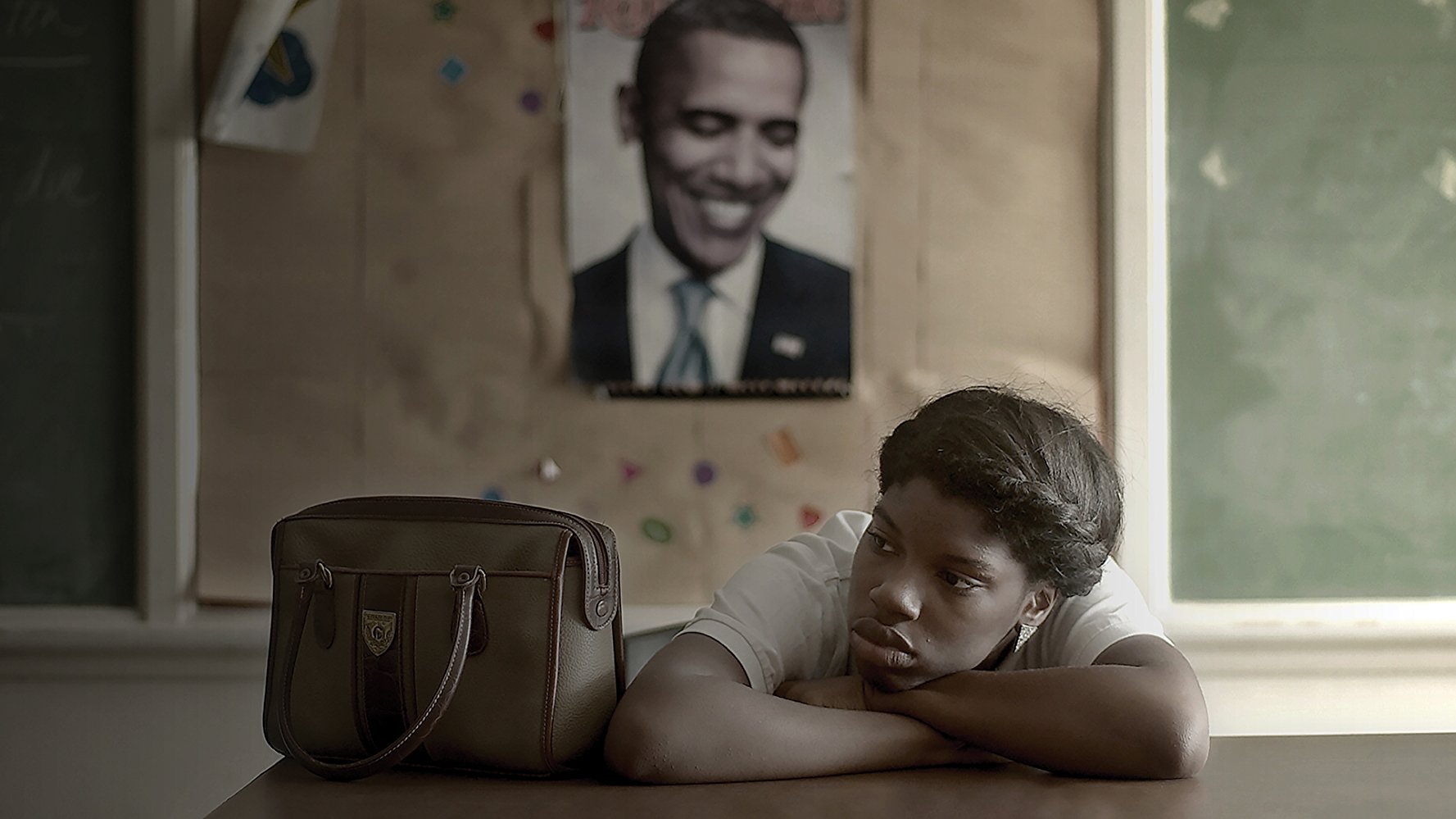17-year-old Daje “Boonie” Shelton is a “bad kid.” Marked as such early on—a burden that, to hear her tell it, primed others to expect less of her in a depressingly predictable cycle—Daje is expelled from her public high school and ordered to attend Innovative Concept Academy, a court-supervised school that offers “delinquent teens” a chance to break out of the school-to-prison pipeline. This decision is the entry point for For Ahkeem, a moving, sensitive documentary that follows Daje over a period of two years as she comes of age in North St. Louis.
Punctuated by the fatal police shooting of Mike Brown in Ferguson, Missouri, the film locates Daje’s story in a community plagued by racism and poverty. Confronted with more obstacles than opportunities, black teenagers in Daje’s neighborhood live in a world where little separates youth and adulthood. The more quotidian acts of growing up—friendship, first love—exist alongside funerals for classmates killed by gun violence and hostile encounters with police.
For Ahkeem is staggeringly intimate. Directors Jeremy S. Levine and Landon Van Soest, along with cinematographer Nicholas Weissman, are so unobtrusive in their camera movements that the film is more reminiscent of fiction than it is the talking-heads-stuffed aesthetic that has become the standard for mainstream documentaries today. The film looks like poetry: extreme close-ups register every laugh, every shudder of frustration while the faces of Daje’s family and mentors slip in and out of focus, emphasising the real person that too often is hidden behind projected politicised rhetoric. We can see the tears in the eyes of Daje’s mother; we can feel the carefree joy as Daje walks the streets of St. Louis with her friends. A handheld, two camera system captures both sides of profoundly personal conversations, doing away with the need for any exposition besides Daje’s occasional, meditative voiceover.
Perhaps the person who most benefits from the film’s intimate camerawork is Daje’s boyfriend Antonio, a young man who, if not permitted the empathy that this film engenders, would most likely read as an underdeveloped foil for Daje’s tenacity. Dropping out of high school early in the film, Antonio struts around shirtless, a gesture that ensures the camera lingers on the multiple tattoos that plate his sinewy frame. Later, at a critical point in his shared life with Daje that should not be spoiled, Antonio is arrested for occupying a stolen vehicle. But For Ahkeem gains access to Antonio at his most vulnerable too, always establishing the greater context of discrimination and economic destitution that renders it all but impossible for him to prove anybody wrong. In one of the film’s most heart-wrenching scenes—and there are many—Antonio openly weeps, vowing to provide for his family. In another, he gently comforts a distraught Daje, their tender embrace a centering emotional moment.
Levine, Van Soest, and Weissman, all white men with backgrounds in socially-conscious cinema, are committed to portraying their subjects with honesty and respect. Eschewing the temptation to construct grand, triumphant narratives, they allow their subjects’ lives to speak for themselves while also visually framing the members of Daje’s community in such a way that maximises their humanity. (Reassuringly, the film’s team has set up a fundraiser accessible by the film’s website encouraging people to donate towards the cost of Daje’s community college classes.) There is a delicate balance between providing marginalised subjects a platform and taking advantage of their stories, but For Ahkeem never feels exploitative. It is naive to think that Daje and her community were unaffected by the presence of a camera, especially since it was wielded by a white man, but you get the sense that Weissman took care to never invade a space that was not his to occupy, a cinematic feat considering the physical closeness of most shots.
It is deeply problematic to suggest we need For Ahkeem to remind ourselves that young black people like Daje deserve the empathy that our society so freely affords other demographics; black lives matter in and of themselves. Yet the significance of this film in the current era cannot be denied. There is something remarkable, even hopeful about crystallising these years of Daje’s life for posterity. Perhaps someday in the far future, For Ahkeem will cease to be a reflection of our present and instead serve as an important reminder of our past. For now, we have the film’s last image: imbued only with cautious optimism, Daje sits on a beach, the expanse of the sea behind her, resilient in the face of the unknown.





